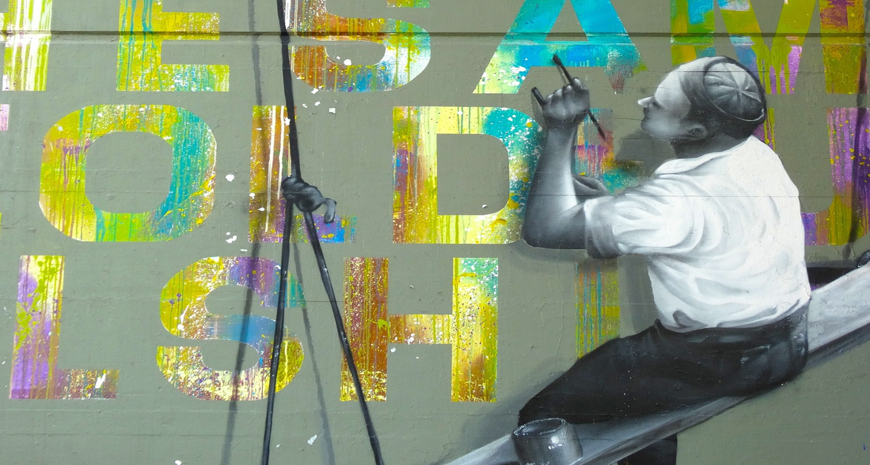In the timeline of art history, contemporary art came before modern art. Art is considered contemporary if it was created after 1945, however not all works of art created after this date fall within this category. It encompasses painting, photography, sculpture, installations, video art, digital art and many other forms of artistic expression. In the following article, Artalistic brings you on a deep-dive into contemporary art in an attempt to define this vast world of creation.
The history of contemporary art
The majority of art historians agree that contemporary art started at the end of the Second World War. Several movements are encompassed within it, including: figurative art, hyperrealism, pop art, street art, feminist art, conceptual art, video art and digital art as well as many other movements. Contemporary art is unique in its capacity to transform itself, break boundaries and incorporate new techniques and media that enable it to evolve.
Implementing ideologies
By questioning the times in which they live, contemporary artists use new technologies combined with more traditional media such as painting, photography, screen printing and digital technologies in order to open doors to new forms of expression.
New perspectives
Contemporary art is therefore synonymous with a stylistic renaissance that transcends classical and modern art by expanding artists’ means of expression. Contemporary art is conceptual at its core, allowing artists to search for new means of expression that set it apart from figurative art. Contemporary artist’s main goal is to question society's current issues, while expressing the artist’s unique set of values.
From Paris to New York and London, contemporary art has been influenced by the Impressionists and modern art – encompassing art created from 1850 to the first part of the 20th century. One of contemporary art’s main goals is to display it in non-traditional, institutional venues, bringing it into public spaces for everyone to see and enjoy. Many artists embrace this more direct interaction with the viewer.
Contemporary art and experimentation
This experimental quality has allowed contemporary art to diverge from modern art. This unprecedented artistic movement explores new subjects and constantly expands creative boundaries.
Contemporary art gradually gained recognition from the 1960s on with the emergence of pop art, a movement that made a radical break from modern art by bringing political subjects under question while also underscoring the excessive nature of the consumer culture that is present in industrialized countries.
How did contemporary art evolve?
The advent of photography in the 19th century had a direct influence on contemporary art due to its unique capacity to represent reality. Contemporary art is becoming increasingly abstract as artists expand into new media and technologies.
Contemporary art and the revolution in technology
From the 1980s onwards, video art and digital art opened countless avenues of conceptual expression, which exploded a few years later when the Internet was created. These new forms of media became public when contemporary art entered a new era of globalization. Art that is created using technological components is developing in tandem with new advancements in the industrial research field, for example, crypto art, which is the most successful branch of this field.
Creative Freedom
The advent of new technologies has allowed information to be exchanged more readily. This has made contemporary art more accessible but has also created other challenges. One of the most positive aspects of this is the appearance of an increasing number of artists from "developing countries" on the contemporary art scene that have, until now, been under-represented.
The globalization of contemporary art has blurred traditional borders, creating a world-wide stage for new exchanges and developments in contemporary art.
Art with a social statement
An increasing number of publicly funded programs and private foundations that support contemporary art are being created. For example, in France there is a national network of contemporary art centers, which promote awareness, organize exhibitions and provide studio spaces.
There are 23 Regional Funds for Contemporary Art (FRAC) in the country, which finance these spaces. They organize over 600 events and exhibitions every year. The fact that these spaces are publicly funded is proof of the important place contemporary art holds in modern society.
Voilà, we hope that you have enjoyed learning about contemporary art. Feel free to browse our carefully curated collection of contemporary art for sale. Artalistic’s virtual galleries feature work by well-established and emerging artists working in an array of media, including painting, photography, drawing, and sculpture. Thanks for staying in-the-know about the latest news from the art world with Artalistic!
 English
English Français
Français


You must be logged in to post a comment.
Click here to log in